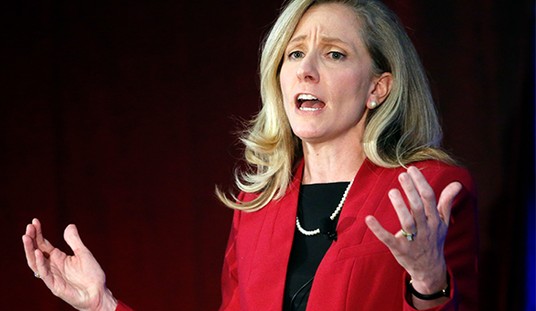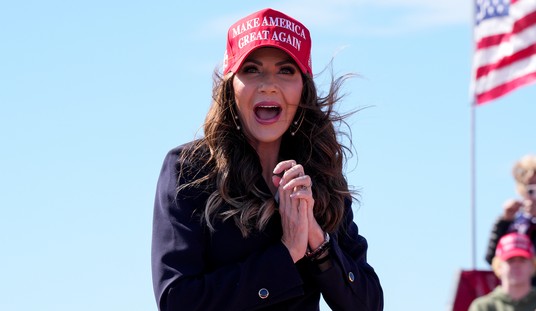The Chronicle of Higher Education published a story Friday offering a lengthy (but still incomplete) look at what happened at Evergreen State College last year. Few of the details in the story are new, but near the end of the story, we learn that President George Bridges felt broken by the whole experience and decided to talk to a psychologist about it over the summer.
Mr. Bridges was left to figure out exactly what had happened, and what, if anything, he might have done differently. The sociologist had tried to square his authority as president with his empathy for those who rebelled against it. He was sure that Evergreen State was a force for good. But there were more powerful forces at work, too..
Sometime over the summer, Mr. Bridges started to feel broken. He had trouble thinking through problems, making decisions, staying upbeat. “Something wasn’t working quite right,” he says. “I just didn’t feel right.”
He started talking to a psychologist. He’s still working it out.
“It’s the exposure of your personal character to vilification that is perhaps the hardest piece,” says Mr. Bridges. “That’s where the trauma comes from — for me at least. It wasn’t the students. I really believe that.”
I have no doubt that things would have been much easier for Bridges if what happened at Evergreen had remained within the bubble of far-left politics at the school. He and dozens of other professors have made it clear for months that they believe former Professor Bret Weinstein’s decision to speak to Fox News (and other outlets) was the real moment everything went wrong.
But even this story, which errs on the side of generosity to the student protesters, is straightforward enough to make it clear that Bridges basic approach was to bend over backward for the young adults throwing a tantrum on his campus and in his office. Bridges left his police, faculty and other targets of the students’ ire to fend for themselves.
The new chief quickly learned that how she made students feel was not entirely within her control. At a ceremony welcoming her to the job, students took over the dais and blew air horns. According to a report in the student newspaper, they shouted “Death to pigs!” Ms. Brown’s children were in attendance. Mr. Bridges was there, too. He yielded the stage to the protesters.
When police went to check on Bret Weinstein after hearing he had been cornered by a large group of students, they were blocked and then harassed by those same students. What did Bridges do? Nothing.
After blocking Ms. Brown and Mr. O’Dell from checking on Mr. Weinstein — who later said he was fine and never felt physically threatened during the exchange in the hallway — protesters tried to block the officers from returning to the campus police station. A small group of students stood in front of their patrol car, moving like basketball defenders when the officers tried to steer around them.
Later, about 30 students gathered around the station, shouting and “acting in an aggressive manner,” according to Mr. O’Dell. Ms. Brown put the building on lockdown. Callers flooded the phone lines. Some made false reports, said Mr. O’Dell, trying to draw the officers out of the building. Chalked messages found on campus walkways that night called for Mr. O’Dell to be fired.
“I don’t want police on campus,” read one message scrawled on brick. “The police make me nervous and afraid.”…
Mr. Bridges did ask the police chief to come talk to the students shortly after Mr. O’Dell’s clash outside Mr. Weinstein’s building — unarmed and out of uniform. She tried to explain the response to reports that Mr. Weinstein had been cornered in his classroom. Students mocked her, interrupted her, and called her a liar.
A student took video of Ms. Brown standing behind a lectern, stone-faced, her blonde hair in a ponytail. The president stood next to her. He said nothing.
Meanwhile, Bridges was willing to do (or not do) anything to win the approval of the protesters:
“It’s a performance,” says Mr. Bridges. “A way of demonstrating your frustration, your anger.”
So when students took over his office, he declined to involve the police. When a student yelled at him to “shut the fuck up,” he responded by calmly asking, “So you want me to leave?” When a student clowned him for talking with his hands, he offered to hold them behind his back when speaking…
Students tried him. “If you’re the management of operations,” one of them asked, “why is it that you never know what the fuck is going on?”
Mr. Bridges threw his head back and laughed. Levity was good.
“It’s not funny,” said another student. “Be serious when you’re talking to us.”
The president quickly adjusted. “I’m being very serious.”
“Don’t laugh then. Don’t smirk. Because you’ve been doing that a lot.”
“I’ll try,” said Mr. Bridges.
Bridges is right that the student behavior is a performance. Anyone who has had a small child plop down in a store and begin screaming because they can’t immediately get what they want is familiar with how tantrums work. But his job as president was not to announce to the student performers that he would do whatever they wanted no matter how extreme their behavior became. His job was to let them know there are limits to the performance.
One of those limits should have been directly interfering with police. A second: Interrupting a classroom to demand a professor be fired. A third: Harassment of other professors on campus, e.g. blocking them inside buildings or demanding they explain where they are going as they cross the campus. A fourth: Traveling the campus with bats and sticks, breaking windows and spraying graffiti on the science building where Bret Weinstein worked. And a fifth limit should have been the racist treatment of white students on campus during this protest. (The Chronicle story mentions the first three of these incidents but not the latter two for some reason.)
President Bridges response to all of this was weak to the point of inept. Months later some students were disciplined but most apparently only got a warning saying that if they did something like this again there could be consequences.
That’s why he was heavily criticized from outside the college. It was obvious he was mostly interested in placating the mob, not in expecting them to behave like young adults who ought to know better. Everyone involved would have experienced less trauma if Bridges had stood with his police force and his faculty instead of making himself a human welcome mat, one the students could walk all over. Any parent who has ever, in a moment of weakness, given in to a child’s tantrum can tell you that only encourages the next tantrum.








Join the conversation as a VIP Member